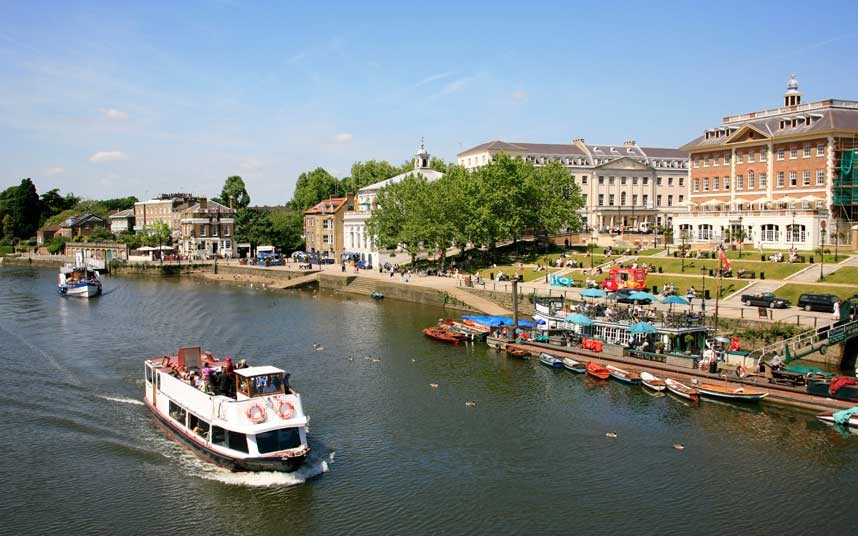509: Printed Currency and Property Prices Rising
05-31-2014
 PropertyInvesting.net team
PropertyInvesting.net team
Slowdown As Expected: As we predicted about a month ago, the UK property market is starting to slow down, particularly in the upper end of the market in London. Again, this is no surprise because it is part of an annual cycle. The super-rich spend their summers enjoying themselves rather than hunting for properties in cities like London. The average person also has their eye on their summer holidays and they prefer not to get embroiled in house hunting, negotiating and conveyancing during the children’s holidays. We expect momentum to pick up again mid-September, particularly if it looks like the Tories are heading for either a win or a coalition at the next General Election in May 2015.
Ripple Effect In The Provinces: The property price ripple is slowly spreading from London, though not to  such a great extent as it did in the period 2002-2007. The rest of the UK will continue to see property prices rising at less than half the speed of London because supply is not lagging so far behind – also demand is less robust because of the weaker economy and lower population growth. In the provinces it is also easier to build new houses. Prices in SE England, outside London, will rise as some of the people in London sell-up and move further out to larger lower priced properties, just like they did in 1989 and again in 2002.
such a great extent as it did in the period 2002-2007. The rest of the UK will continue to see property prices rising at less than half the speed of London because supply is not lagging so far behind – also demand is less robust because of the weaker economy and lower population growth. In the provinces it is also easier to build new houses. Prices in SE England, outside London, will rise as some of the people in London sell-up and move further out to larger lower priced properties, just like they did in 1989 and again in 2002.
Printed Currency Backdrop: When people talk negatively about the “house price bubble” in London – what they should realise is that the “real value” of property in London has not risen very much in the last ten years – instead the value of the Sterling currency has crashed. It has dropped compared to competitor’s currencies and the Bank of England has destroyed further value with all the currency printing. Because of this stealth inflation, or printing of currency (not money) – it has had the consequence – which we predicted years ago – of inflation in property prices. This printed currency has to find a home somewhere. The super-rich are the ones with easiest access to this zero cost printed currency – and they have grabbed as much as possible and invested in something physical that they can touch and feel – yes, property in Central London. Who can blame them? If the Bank of England gives out free currency – what would you do with it?
Adjusting to a Flood of Currency: What we have experienced is a re-adjustment of property prices in London to the amount of currency in circulation. And the four fold increase in currency supply has only lead to a doubling of the property prices – it could have been far more. This is something you never hear about in the press. Quantitative Easing now seems a distant memory, but we are seeing the ramifications of it in the inflation price of London property prices that is now rippling out across southern England and might eventually get to Northumberland and west Cumbria in a few years time, as long as there is not a sharp correction beforehand (ref: caused by a Labour win at the next General Election).
Internet Highlights the Bad: The internet has changed the world and this has helped property prices in London. Let us explain. All the horrors of the world are being recorded in videos – the wars, dreadful attacks on women, oppression and violence. Governments are finding it difficult to hide their atrocities. P eople have more choice and are more mobile, and borders are more open than they used to be. Great Britain used to have an Empire, now it has the Commonwealth. It has obligations to these countries and allows many migrants to settle in the UK. Meanwhile the internet makes it very plain for the whole world that London is about the safest super-city to live in if you are a migrant worker – either super-rich, middle class or working class. The population of the world has doubled in 40 years to 7 billion people. London has a population of 8.3 million. It is a truly global cosmopolitan city that attracts many of these 7 billion people – billions of people would like to live in London. The population is growing at 150,000 a year but only 35,000 homes are being built each year – two to three times less than required. Meanwhile the economy is booming – with many new jobs and shortage of skills. We can now start to understand how London’s kind treatment of migrants, its tax safe haven status, security and openness along with low building levels are causing property prices to rise sharply – along with the currency printing from the US, UK, Japan, mainland European and China. These currency printing presses thave gone berserk in the last few years. It’s quite predictable. As long as the government treats the migrants well – which they are on the whole – almost an open door policy – we will continue to see London property prices rising sharply and more chronic housing shortages.
eople have more choice and are more mobile, and borders are more open than they used to be. Great Britain used to have an Empire, now it has the Commonwealth. It has obligations to these countries and allows many migrants to settle in the UK. Meanwhile the internet makes it very plain for the whole world that London is about the safest super-city to live in if you are a migrant worker – either super-rich, middle class or working class. The population of the world has doubled in 40 years to 7 billion people. London has a population of 8.3 million. It is a truly global cosmopolitan city that attracts many of these 7 billion people – billions of people would like to live in London. The population is growing at 150,000 a year but only 35,000 homes are being built each year – two to three times less than required. Meanwhile the economy is booming – with many new jobs and shortage of skills. We can now start to understand how London’s kind treatment of migrants, its tax safe haven status, security and openness along with low building levels are causing property prices to rise sharply – along with the currency printing from the US, UK, Japan, mainland European and China. These currency printing presses thave gone berserk in the last few years. It’s quite predictable. As long as the government treats the migrants well – which they are on the whole – almost an open door policy – we will continue to see London property prices rising sharply and more chronic housing shortages.
Young Population: The net inward migration has also lead to a very young population that are in their fertile years between 16-44 years, and this has caused a population baby boom since the Labour party started opening the flood gates in 1997. The Tory Coalition cannot do anything about this – and should they in any case? The outcome is rampant population growth that looks set to continue for decades to come. Because London is constrained by Greenbelt and the UK has about the strongest Nimby firepower in the world, we are unlikely to see any meaningful increase in property building in the next few years. In fact, if property prices start plateauing off, many developments will be cancelled. This would also happen if Labour win the election as capital becomes hard to come by.
Stop To Building: An example of this is: Labour won the Hammersmith and Fulham council election – a shock result. They have immediately set out to try and block the development of Earls Court even though the development has been granted permission – partly because the council estate tenants would like to stay living in their existing council flats and Labour got voted in on the “Stop Earls Court” ticket. This development is £3 billion worth of investment – about the biggest building development in London and will create 10,000 new jobs plus 7600 new homes. If the development is blocked, we can see a reduction of 7600 homes in a moment just as an example of this UK Nimby effect. Some of the ugliest and outdated buildings in the world – namely Earls Court Exhibition, Lillie Warehouse and some smaller adjoining council estates would live on. Anyone that thinks there will be a building boom in the UK is being very optimistic – no-one in UK wants this it seems, at least not if it’s in their back-yard.
M25 and Heathrow: Another example is how it took 10 years to build a 3m wide extension to the M25 orbital motorway around SW London in the 1990s – absolutely incredible. The Victorians built cities in that time. Very little progress is made on infra-structure improvements and building-environmental consultants are making millions each time proposals are put forward – with endless consultation sessions and legal challenges – the Heathrow new runway is a classic example. A single runway may take 25 years to build. The message is – don’t expect any garden cities, new towns or large developments – and expect the housing crisis to worsen regardless of property prices.
Edinburgh Tram Debacle: Another classic example is the Edinburgh Tram project that took ten years to build, twice as long as planned, cost twice the original budget and is half the original size. Meaning four times less bang for the public sector buck. This project clearly demonstrates that any project that cuts through parcels of land owned by different entities - a so called private/public partnership - has huge risks that never seem to be taken into account.
Successful Projects: The two successful projects have been the Olympics and Heathrow Terminal 5. Both projects benefited from concrete deadlines, a large tract of land that could be built on with minimum interference and strong public-political backing. Crossrail looks set to be another successful project - it tunnels through many areas to avoid Nimby interference and has strong public-private sector backing. Undoubtedly property prices in places like Acton, Paddington, Ealing, Forest Gate and Abbey Wood are set to skyrocket as the new stations open.
Inward Migration: The inward migration of young people into London from all parts of the UK along with the rest of the world attracts a high proportion of motivated, educated and talented people, all keen to develop their careers. This is one of the key drivers behind the property prices rising – particularly in the middle of the market. These people are desperate to get a London house if they can possible afford one. They view this as a good long term investment – good for their families. The supply-demand picture, population projections and outlook for London as a global super city make the case quite compelling that prices will be far higher in future years – and that a property purchased in London will be a good investment for themselves and their families long term. If the prices skyrocket, it will help them retire one day as they can down-size and release capital. Little has changed over the years, it was similar in the 1980s and late 1990s – except it’s become more extreme with more inward investment, more printed currency, lower building levels, more super-rich, more London business growth and a rising population. Can this continue? – almost certainly if the Tories win in 2015 and possibly, but most likely not, if Labour win. Let’s be frank about the reasons. Labour will:
* Raise the London property taxes – especially on homes values at over £1 million
* Increase regulation on Landlords and property owners
* Increase tenant rights
* Increase general taxation levels
* Spend more money on wasteful projects and employ more public sector workers
* Tax the super-rich – so many will choose leave
* Increase council taxes, building taxes and income taxes
Interest Rates To Rise: The cost of borrowing would likely rise sharply if Labour win the General Election  May 2015 because financial markets would took flight – and then property prices would drop. Borrowing would become more difficult as capital flowed out of the UK. If the Tories win a majority, the opposite would happen. Anyone that has any doubts about this should see the damage a similar social government is doing in France at the moment – with a prolonged recession that kicked in a month after the socialists were elected into power leading to disappointing tax revenues after big tax increases. They have simply taken a larger share of a shrinking pie, and caused the pie to shrink. London would still be a relatively safe place to live, nice city to live in, but the economy would suffer and property prices slide under Labour as interest rates rose and Sterling fell. Import costs would rise and also general inflation with it – oil and food prices would rise, but property prices would drop. Rich people in SE England would be taxed more and the money used for public sector projects in the provinces – the common model used by Labour over the last 80 years – until funds were exhausted and debts and deficits rose to unsustainable levels. Not a pretty picture but the expectation from past performance. Indeed, Ed Milliband and Ed balls are further left in their policies than Gordon Brown who was at the helm as the UK economy crashed in 2008. We would expect a more extreme variant of Gordon Brown.
May 2015 because financial markets would took flight – and then property prices would drop. Borrowing would become more difficult as capital flowed out of the UK. If the Tories win a majority, the opposite would happen. Anyone that has any doubts about this should see the damage a similar social government is doing in France at the moment – with a prolonged recession that kicked in a month after the socialists were elected into power leading to disappointing tax revenues after big tax increases. They have simply taken a larger share of a shrinking pie, and caused the pie to shrink. London would still be a relatively safe place to live, nice city to live in, but the economy would suffer and property prices slide under Labour as interest rates rose and Sterling fell. Import costs would rise and also general inflation with it – oil and food prices would rise, but property prices would drop. Rich people in SE England would be taxed more and the money used for public sector projects in the provinces – the common model used by Labour over the last 80 years – until funds were exhausted and debts and deficits rose to unsustainable levels. Not a pretty picture but the expectation from past performance. Indeed, Ed Milliband and Ed balls are further left in their policies than Gordon Brown who was at the helm as the UK economy crashed in 2008. We would expect a more extreme variant of Gordon Brown.
We hope this Special Report has been insightful and helpful for your investment portfolio.

